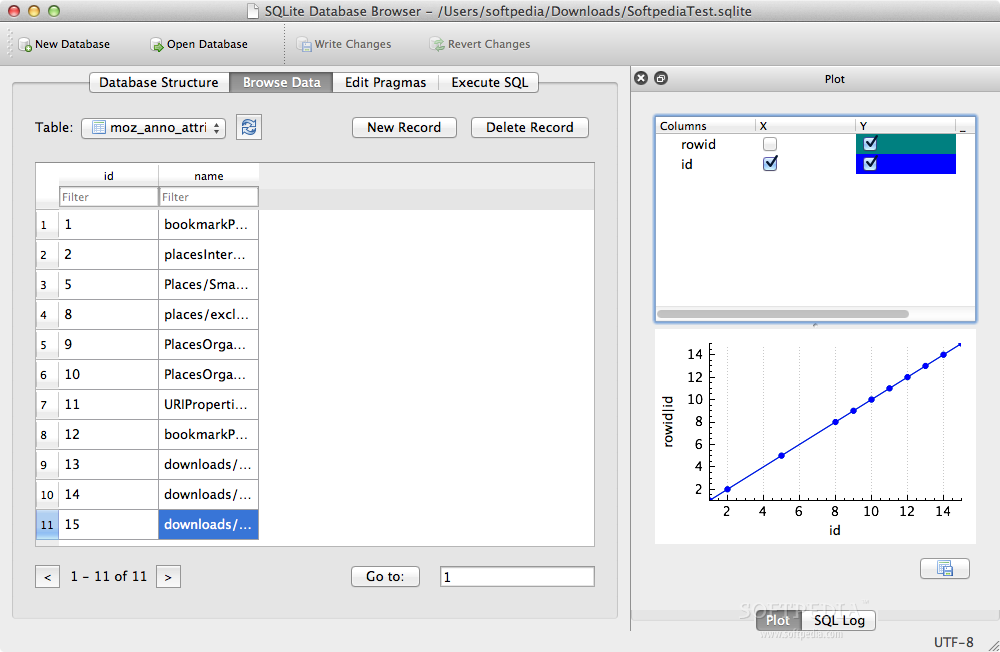

SQLITE FOR MAC OS X INSTALL
You can install SQLite on a Raspberry Pi using this command: :~ $ sudo apt-get install sqlite3 It’s available on UNIX (Linux, Mac OS-X, Android, iOS) and Windows (Win32, WinCE, WinRT)ĭatabases are used to store information in a way that can be accessed quickly and easily. In this post you’re going to build a data logging application with a Raspberry Pi that stores temperature and humidity. SQLite comes with zero-configuration (no setup needed).SQLite does not require a separate server process or system to operate (serverless).SQLite is self-contained (no external dependencies required).A complete SQLite database is stored in a single cross-platform disk file.Here’s some of the features that makes SQLite a great database:

You can read my Getting Started with the Raspberry Pi Guide to install Raspbian and complete the basic setup. Basic Raspberry Pi Setupīefore you continue reading this project, please make sure you have Raspbian Operating System installed in your Raspberry Pi. For more information you can read the official documentation here. Note: SQLite is more powerful and has a lot more features from what I’m about to show you, however the purpose of this tutorial is to share a basic example on how you would store temperature and humidity readings in a SQLite table.
SQLITE FOR MAC OS X HOW TO
This tutorial shows you how to install SQLite on a Raspberry Pi and teach you some basic commands to use SQLite in your RPi projects. A complete SQL database with multiple tables, indices, triggers, and views, is contained in a single disk file. SQLite reads and writes directly to ordinary disk files. Unlike most other SQL databases, SQLite does not have a separate server process. SQLite is an embedded SQL database engine. SQLite is the most widely deployed SQL database engine in the world and its source code is in the public domain.ĭon’t have a Raspberry Pi board? read Best Raspberry Pi Starter Kits. In this blog post I’ll introduce you to SQLite, which is an in-process light weight library that implements a self-contained, serverless, zero-configuration, transactional SQL database engine.


 0 kommentar(er)
0 kommentar(er)
